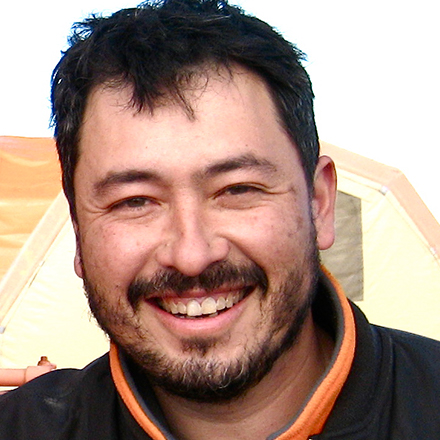
Pascal Lee
Candidate sites for NASA Artemis Base Camp on the Moon
Description: NASA’s Artemis Program aims to land the first woman and next man at the Lunar South Pole and enable a sustainable long-term human presence on the Moon. A key objective of the program is the establishment of a permanent infrastructure on the Moon, the Artemis Base Camp, along with an attendant multi-asset mobility system. The exact location of this future base has not yet been finalized, and an exciting cooperative opportunity exists to identify and recommend candidate sites that may optimally serve NASA’s goals for lunar science and exploration.
The student will work with Dr Lee at the SETI Institute to propose possible candidate locations for an Artemis Base Camp on the Moon using specific sets of criteria - scientific, environmental, logistical, operational - and NASA’s state-of-the-art “Moon Trek” mapping, modeling, and visualization tool. Lessons from the establishment and operation of the NASA Haughton-Mars Project (HMP) base camp on Devon Island in the Arctic will also be drawn upon and incorporated into Artemis Base Camp candidate site considerations.
Candidate sites for NASA Artemis Base Camp on the Moon
Description: NASA’s Artemis Program aims to land the first woman and next man at the Lunar South Pole and enable a sustainable long-term human presence on the Moon. A key objective of the program is the establishment of a permanent infrastructure on the Moon, the Artemis Base Camp, along with an attendant multi-asset mobility system. The exact location of this future base has not yet been finalized, and an exciting cooperative opportunity exists to identify and recommend candidate sites that may optimally serve NASA’s goals for lunar science and exploration.
The student will work with Dr Lee at the SETI Institute to propose possible candidate locations for an Artemis Base Camp on the Moon using specific sets of criteria - scientific, environmental, logistical, operational - and NASA’s state-of-the-art “Moon Trek” mapping, modeling, and visualization tool. Lessons from the establishment and operation of the NASA Haughton-Mars Project (HMP) base camp on Devon Island in the Arctic will also be drawn upon and incorporated into Artemis Base Camp candidate site considerations.
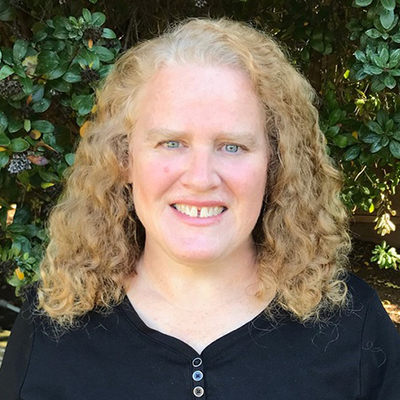
Virginia Gulick
Fluvial and hydrothermal studies of the surface of Mars
Description: Dr. Ginny Gulick examines erosional features on Mars, looking for the tell-tale signs of running water in Mars’ geological history. Some of the meandering valley networks that lace the landscape may indicate that Mars was a warmer, wetter world billions of years ago. But other features, including gullies found around many impact craters and valley walls, may be evidence of water that flowed on the martian surface more recently.
Dr. Gulick uses stereo images and Digital Terrain Models (DTMs) from Mars-orbiting cameras including HiRISE, CTX, and HRSC to look for features caused by flowing water (“fluvial” features) or by heated groundwater (“hydrothermal” features). The current project is focused on understanding gully formation in Mars’ more recent geological history, by studying their 3D slope morphology, their spatially association landforms, and their topographic and environmental settings. However, we are also interested in understanding the formational environments of channels, valleys, and paleolakes throughout Mars’s geological history. We will use information from terrestrial analog sites, hydrologic models, and DTMs to estimate water discharges, volumes, and erosion rates to better understand the implications for paleoclimatic change. Opportunities are also available for HiRISE science operations support, including help with science planning and targeting and analysis of acquired data.
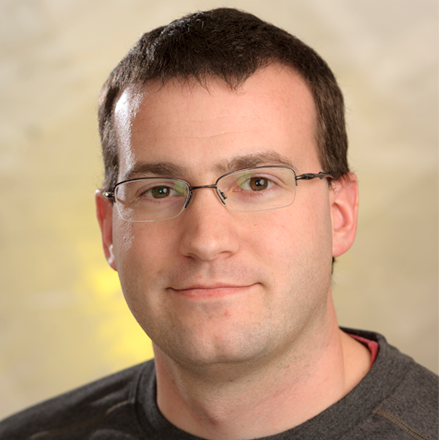
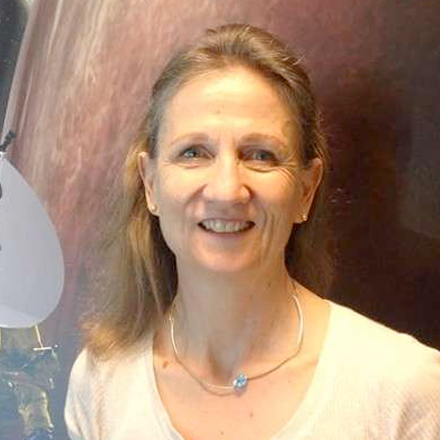
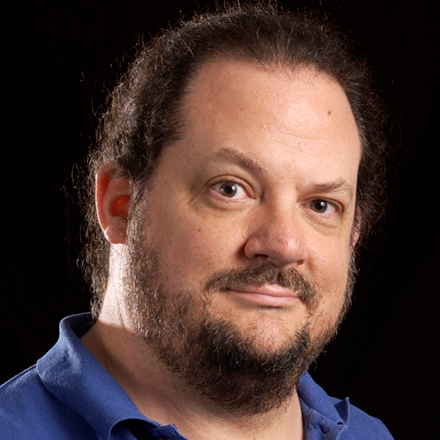
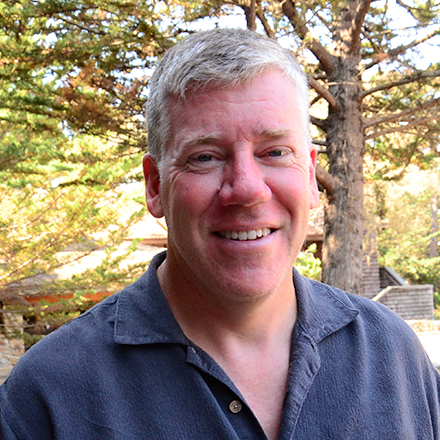
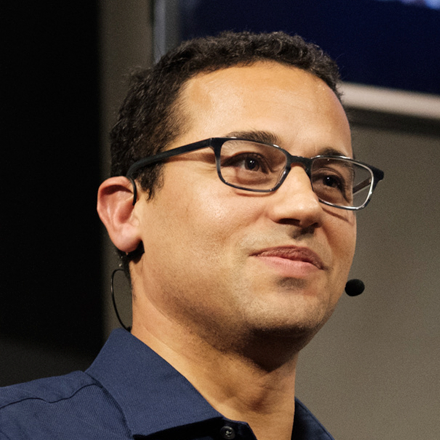
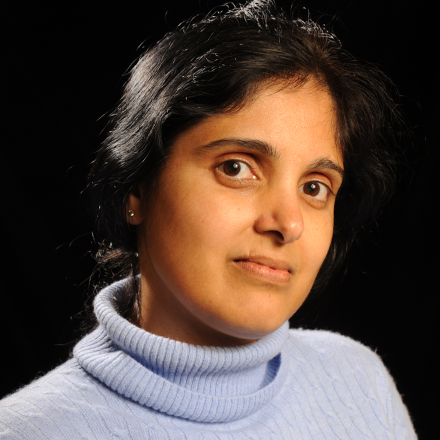
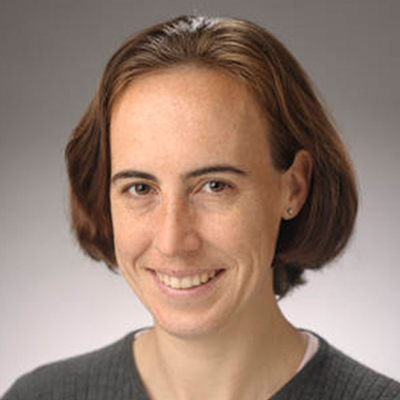
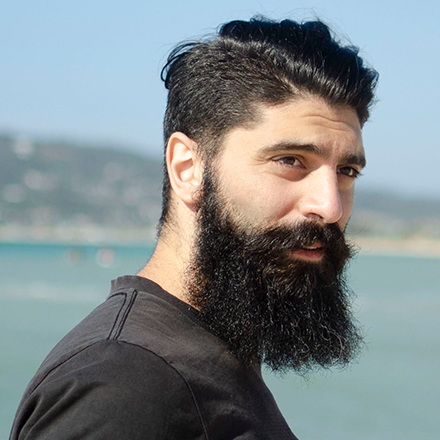
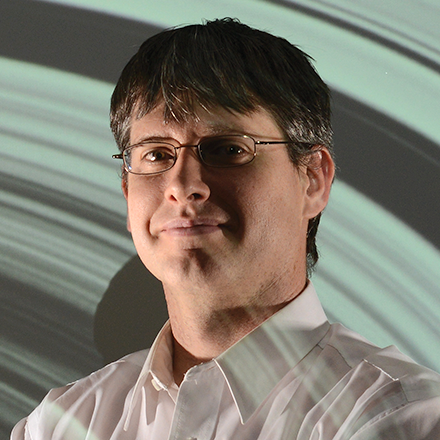
Fluvial and hydrothermal studies of the surface of Mars
Description: Dr. Ginny Gulick examines erosional features on Mars, looking for the tell-tale signs of running water in Mars’ geological history. Some of the meandering valley networks that lace the landscape may indicate that Mars was a warmer, wetter world billions of years ago. But other features, including gullies found around many impact craters and valley walls, may be evidence of water that flowed on the martian surface more recently.
Dr. Gulick uses stereo images and Digital Terrain Models (DTMs) from Mars-orbiting cameras including HiRISE, CTX, and HRSC to look for features caused by flowing water (“fluvial” features) or by heated groundwater (“hydrothermal” features). The current project is focused on understanding gully formation in Mars’ more recent geological history, by studying their 3D slope morphology, their spatially association landforms, and their topographic and environmental settings. However, we are also interested in understanding the formational environments of channels, valleys, and paleolakes throughout Mars’s geological history. We will use information from terrestrial analog sites, hydrologic models, and DTMs to estimate water discharges, volumes, and erosion rates to better understand the implications for paleoclimatic change. Opportunities are also available for HiRISE science operations support, including help with science planning and targeting and analysis of acquired data.
Qualifications: Students with a geology, geography, or hydrology background with an emphasis in geomorphology and experience with computer software ArcGIS and/or ENVI are strongly desired. Experience with Python and/or MatLab preferred.

Jeffrey Smith
Studying Meteors: Where do they originate and where do they land?
Description: The Geostationary Lightning Mapper (GLM) instruments onboard the GOES 16 and 17 weather satellites can detect large bright meteors (called bolides) in Earth’s atmosphere. Due to their large, continuous fields of view and immediate public data availability, GLM provides a unique opportunity to detect a large variety of meteors, including those in the 0.1 to 3 m diameter range that complements current ground-based meteor detection systems, which are typically sensitive to larger events. We have developed a machine learning based bolide detection and light curve generation pipeline as part of NASA’s Asteroid Threat Assessment Project (ATAP). With the pipeline running for well over a year now, we have assembled a vast and unique catalogue of meteors using a consistent and wide field of view.
It’s now time to analyze the data! For this project the student will collect and process the data set and develop statistical models for meteor populations. What is the size distribution of meteors? Are there preferred impact regions across the globe or are they evenly distributed? How do meteors typically break up as they travel through the atmosphere? Because there are two GOES satellites with an overlapping field of view, we can begin studying the trajectory of the objects. We hope to even develop a statistical model of the origin of meteors. These and other fundamental questions can now be answered and will help us understand both the threat to Earth due to large meteors and also the origin and evolution of our solar system.
Studying Meteors: Where do they originate and where do they land?
Description: The Geostationary Lightning Mapper (GLM) instruments onboard the GOES 16 and 17 weather satellites can detect large bright meteors (called bolides) in Earth’s atmosphere. Due to their large, continuous fields of view and immediate public data availability, GLM provides a unique opportunity to detect a large variety of meteors, including those in the 0.1 to 3 m diameter range that complements current ground-based meteor detection systems, which are typically sensitive to larger events. We have developed a machine learning based bolide detection and light curve generation pipeline as part of NASA’s Asteroid Threat Assessment Project (ATAP). With the pipeline running for well over a year now, we have assembled a vast and unique catalogue of meteors using a consistent and wide field of view.
It’s now time to analyze the data! For this project the student will collect and process the data set and develop statistical models for meteor populations. What is the size distribution of meteors? Are there preferred impact regions across the globe or are they evenly distributed? How do meteors typically break up as they travel through the atmosphere? Because there are two GOES satellites with an overlapping field of view, we can begin studying the trajectory of the objects. We hope to even develop a statistical model of the origin of meteors. These and other fundamental questions can now be answered and will help us understand both the threat to Earth due to large meteors and also the origin and evolution of our solar system.
Qualifications: The ideal student would already be familiar with either the Python or Matlab programming language and have experience processing large data sets. A basic understanding or a desire to learn more about detection and population statistics would be beneficial.

Cristina Dalle Ore
A study of ice on Rhea as a tool to measure the age of Saturn’s icy satellites
Description: Dr Cristina Dalle Ore uses data from the Cassini and New Horizons missions to study the physical characteristics of icy surfaces. These include composition, temperature, ice phase, and structure – important parameters that ultimately tell us the story of the surface itself. One of the projects that she is working on now involves the study of ice phase in and around craters on the satellites of Saturn. She maps the shape of the 2-micron H2O ice band in the observed spectra collected around craters. Distortions in the shape of the band are telltales of variations in ice phase. Since craters are the result of collisions with sizeable objects it is assumed that the collision itself would raise the temperature in the area causing the ice to first melt and then freeze in crystalline form. H2O ice changes phase from crystalline to amorphous with time as a result of bombardment from micrometeorites and general radiation processing. The relative amount of one phase versus the other can give us clues on how old the crater is. Generally, craters are used as yardsticks to measure a surface age, the larger the number of craters the older the surface. Therefore, the aim is to use ice phase as an alternative measure of age, which could then be compared to crater counts and provide validation to the very widely used crater counting technique.
Qualifications: Some computer experience is recommended.
A study of ice on Rhea as a tool to measure the age of Saturn’s icy satellites
Description: Dr Cristina Dalle Ore uses data from the Cassini and New Horizons missions to study the physical characteristics of icy surfaces. These include composition, temperature, ice phase, and structure – important parameters that ultimately tell us the story of the surface itself. One of the projects that she is working on now involves the study of ice phase in and around craters on the satellites of Saturn. She maps the shape of the 2-micron H2O ice band in the observed spectra collected around craters. Distortions in the shape of the band are telltales of variations in ice phase. Since craters are the result of collisions with sizeable objects it is assumed that the collision itself would raise the temperature in the area causing the ice to first melt and then freeze in crystalline form. H2O ice changes phase from crystalline to amorphous with time as a result of bombardment from micrometeorites and general radiation processing. The relative amount of one phase versus the other can give us clues on how old the crater is. Generally, craters are used as yardsticks to measure a surface age, the larger the number of craters the older the surface. Therefore, the aim is to use ice phase as an alternative measure of age, which could then be compared to crater counts and provide validation to the very widely used crater counting technique.
Qualifications: Some computer experience is recommended.

David Summers
Title 1: detection of organics and biomarkers
Description: Dr Dave Summers investigates a wide range of chemical reactions that are either needed for life to begin, that may affect whether life can exist, or that might be used by scientists to recognize life elsewhere.
We are currently studying the detection of biomarkers - organic compounds that represent biosignatures of life - in mineral samples. We study where they can be found, how they can be found, and why they are there. This is so we can better search for biosignatures when we look for life on Mars. This project, in collaboration with other members of the SETI Institute’s team in the NASA Astrobiology Institute, will use IR microscope methods to detect and characterize organic samples that have been obtained from the Atacama desert.
Title 2: Microbial detection at low levels by iodine-125 radiolabeling
Description: This work would develop a new method for the detection of microorganisms for planetary protection purposes. It would accomplish this by the detection of an organism’s protein through labeling them with a radioactive label, iodine-125. This would provide greater sensitivity and universality while preserving a good turn-around time for analysis. By utilizing a universal biosignature (cell proteins), this method provides broad generality with regard to the range of organisms that can be detected and isn’t restricted to any type(s) of organism, the ability of the organisms to be cultured, etc. This work would develop a quick and simple method for detecting the proteins from cells. This laboratory-based project would involve: 1) Separation of cells/spores, 2) Lysis of cells, 3) Labeling of released proteins and separation from unreacted label and 4) Detection by standard or multiphoton detection.
Qualifications: Some biology or chemistry lab experience is preferred.
Title 1: detection of organics and biomarkers
Description: Dr Dave Summers investigates a wide range of chemical reactions that are either needed for life to begin, that may affect whether life can exist, or that might be used by scientists to recognize life elsewhere.
We are currently studying the detection of biomarkers - organic compounds that represent biosignatures of life - in mineral samples. We study where they can be found, how they can be found, and why they are there. This is so we can better search for biosignatures when we look for life on Mars. This project, in collaboration with other members of the SETI Institute’s team in the NASA Astrobiology Institute, will use IR microscope methods to detect and characterize organic samples that have been obtained from the Atacama desert.
Title 2: Microbial detection at low levels by iodine-125 radiolabeling
Description: This work would develop a new method for the detection of microorganisms for planetary protection purposes. It would accomplish this by the detection of an organism’s protein through labeling them with a radioactive label, iodine-125. This would provide greater sensitivity and universality while preserving a good turn-around time for analysis. By utilizing a universal biosignature (cell proteins), this method provides broad generality with regard to the range of organisms that can be detected and isn’t restricted to any type(s) of organism, the ability of the organisms to be cultured, etc. This work would develop a quick and simple method for detecting the proteins from cells. This laboratory-based project would involve: 1) Separation of cells/spores, 2) Lysis of cells, 3) Labeling of released proteins and separation from unreacted label and 4) Detection by standard or multiphoton detection.
Qualifications: Some biology or chemistry lab experience is preferred.

Doug Caldwell
Earth as an Exoplanet: Our View from the Moon
Description: Dr Douglas Caldwell is an astronomer who studies the detection and characterization of exoplanets. The Kepler mission showed us that planets, including small potentially habitable ones, are common. The Transiting Exoplanet Survey Satellite (TESS) has found many planets in our Solar neighborhood, and the James Webb Space Telescope (JWST), scheduled for launch in 2021, will have the ability to study their atmospheres using detailed spectra of them.
Do these nearby Earth-sized planets have atmospheres? If so, what are they made of? Are these planets inhabited? What are indicators of life, or biomarkers, that we can detect from an exoplanet?
In order to use JWST observations to answer such questions, we will need to better understand what the atmosphere of an inhabited planet looks like. The best available source of “ground truth” would be satellite observations taken of the whole Earth. The goal of this student project is to work on the design of a small satellite mission to take whole-Earth spectra in order to measure the temporal variability of spectra from an inhabited planet (Earth) with illumination phase, rotation (land vs ocean), cloud cover, and season. The data would help improve models of habitable planets, guide analysis of exoplanet atmospheric measurements, and inform instrumentation for future NASA missions to search for signs of life on exoplanets.
The student will work to refine the science goals of the mission and to help translate those into requirements for the satellite and for mission operations. The work will involve reviewing scientific literature, researching instrument capabilities, and helping to define the hardware, orbit, and data requirements needed to meet the science goals. The ideal outcome of this project will be a preliminary mission design that can be put forward as part of a proposal to fly the mission.
Qualifications: This project is ideal for someone interested in mission design and development, who also has an interest in exoplanets. The student should have a background in engineering or science and a willingness to work on a broad variety of topics from instrument design to exoplanet science.
Earth as an Exoplanet: Our View from the Moon
Description: Dr Douglas Caldwell is an astronomer who studies the detection and characterization of exoplanets. The Kepler mission showed us that planets, including small potentially habitable ones, are common. The Transiting Exoplanet Survey Satellite (TESS) has found many planets in our Solar neighborhood, and the James Webb Space Telescope (JWST), scheduled for launch in 2021, will have the ability to study their atmospheres using detailed spectra of them.
Do these nearby Earth-sized planets have atmospheres? If so, what are they made of? Are these planets inhabited? What are indicators of life, or biomarkers, that we can detect from an exoplanet?
In order to use JWST observations to answer such questions, we will need to better understand what the atmosphere of an inhabited planet looks like. The best available source of “ground truth” would be satellite observations taken of the whole Earth. The goal of this student project is to work on the design of a small satellite mission to take whole-Earth spectra in order to measure the temporal variability of spectra from an inhabited planet (Earth) with illumination phase, rotation (land vs ocean), cloud cover, and season. The data would help improve models of habitable planets, guide analysis of exoplanet atmospheric measurements, and inform instrumentation for future NASA missions to search for signs of life on exoplanets.
The student will work to refine the science goals of the mission and to help translate those into requirements for the satellite and for mission operations. The work will involve reviewing scientific literature, researching instrument capabilities, and helping to define the hardware, orbit, and data requirements needed to meet the science goals. The ideal outcome of this project will be a preliminary mission design that can be put forward as part of a proposal to fly the mission.
Qualifications: This project is ideal for someone interested in mission design and development, who also has an interest in exoplanets. The student should have a background in engineering or science and a willingness to work on a broad variety of topics from instrument design to exoplanet science.

Franck Marchis
Scientific Investigations with the Unistellar Network. The case of comets and active asteroids
Description: Unistellar’s eVscope network is now made up of ~3000 digital telescopes. These revolutionary, light-amplifying, user-friendly devices allow citizen astronomers to observe the universe, either from downtown or the countryside, in unprecedented clarity and detail. Thanks to our partnership with the SETI Institute, every eVscope user will also be able to join a global network of observers conducting coordinated, worldwide viewing campaigns under the aegis of professional astronomers./span>
The SETI Institute team is currently developing scientific programs with this network. The role of the intern(s) will consist in developing scientific applications with the Unistellar network. To this purpose, they will conduct their own tests with the eVscope, process and analyse the data and interact with our citizen scientists from everywhere in the world to motivate them to participate to the scientific investigations.
Qualifications: Good knowledge of Python and Linux is required. Interest in outreach is necessary. Multi-lingual skills in Spanish, French and/or Japanese is a plus.
Scientific Investigations with the Unistellar Network. The case of comets and active asteroids
Description: Unistellar’s eVscope network is now made up of ~3000 digital telescopes. These revolutionary, light-amplifying, user-friendly devices allow citizen astronomers to observe the universe, either from downtown or the countryside, in unprecedented clarity and detail. Thanks to our partnership with the SETI Institute, every eVscope user will also be able to join a global network of observers conducting coordinated, worldwide viewing campaigns under the aegis of professional astronomers./span>
The SETI Institute team is currently developing scientific programs with this network. The role of the intern(s) will consist in developing scientific applications with the Unistellar network. To this purpose, they will conduct their own tests with the eVscope, process and analyse the data and interact with our citizen scientists from everywhere in the world to motivate them to participate to the scientific investigations.
Qualifications: Good knowledge of Python and Linux is required. Interest in outreach is necessary. Multi-lingual skills in Spanish, French and/or Japanese is a plus.

Uma Gorti
Modeling line emission from protoplanetary disks
Description: The project will involve computational modeling of line emission from gas in protoplanetary disks to infer the physical and chemical environments in which planets form. The student will use data from telescope archives (optical, infrared and radio including ALMA) and construct models that can reproduce the observed emission from a few target disks. Using existing software and tools, the student will vary parameters in the computational model to calculate the disk structure and solve for the disk chemistry. 3D Monte Carlo simulations of the radiative transfer will be performed to reproduce synthetic emission maps and images for comparisons with observational data.
Qualifications:Physics majors are preferred and some computational experience (python or a high-level programming language) is a requirement.
Modeling line emission from protoplanetary disks
Description: The project will involve computational modeling of line emission from gas in protoplanetary disks to infer the physical and chemical environments in which planets form. The student will use data from telescope archives (optical, infrared and radio including ALMA) and construct models that can reproduce the observed emission from a few target disks. Using existing software and tools, the student will vary parameters in the computational model to calculate the disk structure and solve for the disk chemistry. 3D Monte Carlo simulations of the radiative transfer will be performed to reproduce synthetic emission maps and images for comparisons with observational data.
Qualifications:Physics majors are preferred and some computational experience (python or a high-level programming language) is a requirement.

Ann Marie Cody
From exocomets to technosignatures: searching for hidden occulters in planetary systems
Description: Dr Ann Marie Cody uses space telescope data to study variability associated with stars and the material surrounding them. She currently works with data from the Transiting Exoplanet Survey Satellite (TESS), which has monitored the brightness of tens of millions of stars across the sky, on 30-minute timescales. The resulting profile of brightness with time is called a “light curve.” A fraction of TESS light curves display rare behaviors such as drastic fading or brightening events, some of which are difficult to interpret astrophysically. Dr. Cody and collaborators are conducting a research program to search for such “anomalies” in TESS data – in hopes of finding or ruling out the presence of alien megastructures orbiting other stars. Along the way, they will also discover and characterize interesting objects such as exocomets and young stellar objects.
We are seeking a summer intern who can familiarize themself with TESS light curves and aid in their classification. They will develop algorithms to distinguish real variability from systematics and assist in the sorting of light curves output by our anomaly detection pipeline. They may also participate in the search for exocomets transiting other stars. The most interesting targets identified through this analysis will then be followed up with SETI observations and optical photometry.
Qualifications: Some Python programming experience is recommended for this project; the intern will be encouraged to work with Jupyter notebooks and store code in a Github repository.
From exocomets to technosignatures: searching for hidden occulters in planetary systems
Description: Dr Ann Marie Cody uses space telescope data to study variability associated with stars and the material surrounding them. She currently works with data from the Transiting Exoplanet Survey Satellite (TESS), which has monitored the brightness of tens of millions of stars across the sky, on 30-minute timescales. The resulting profile of brightness with time is called a “light curve.” A fraction of TESS light curves display rare behaviors such as drastic fading or brightening events, some of which are difficult to interpret astrophysically. Dr. Cody and collaborators are conducting a research program to search for such “anomalies” in TESS data – in hopes of finding or ruling out the presence of alien megastructures orbiting other stars. Along the way, they will also discover and characterize interesting objects such as exocomets and young stellar objects.
We are seeking a summer intern who can familiarize themself with TESS light curves and aid in their classification. They will develop algorithms to distinguish real variability from systematics and assist in the sorting of light curves output by our anomaly detection pipeline. They may also participate in the search for exocomets transiting other stars. The most interesting targets identified through this analysis will then be followed up with SETI observations and optical photometry.
Qualifications: Some Python programming experience is recommended for this project; the intern will be encouraged to work with Jupyter notebooks and store code in a Github repository.

Wael Farah
Radio observations with the Allen Telescope Array
Description: Dr Wael Farah uses radio telescopes to search for, and study, radio transients and pulsars. Transient events include objects called “Fast Radio Bursts” (FRBs), super-bright flashes of extragalactic origin but of unknown cause. Other transient events include potential techno-signatures of extraterrestrial civilizations, appearing as anomalies in radio data.
Dr Farah currently works on the refurbishment of the Allen Telescope Array (ATA), a radio interferometer located in Northern California, helping to commission new hardware and software that will be utilized for future observations. The ATA is an extremely flexible instrument in terms of sky coverage and observing frequency, making it one of the best in the world to conduct radio searching.
We are seeking a summer intern who can aid in developing software and/or analyzing data and can familiarize themselves with the instrument. The project is flexible, although we preferably seek individuals who are comfortable with developing software and programming.
Qualifications: Qualifications: Some computer science skills (python and/or C) and preferably a physics background.
Radio observations with the Allen Telescope Array
Description: Dr Wael Farah uses radio telescopes to search for, and study, radio transients and pulsars. Transient events include objects called “Fast Radio Bursts” (FRBs), super-bright flashes of extragalactic origin but of unknown cause. Other transient events include potential techno-signatures of extraterrestrial civilizations, appearing as anomalies in radio data.
Dr Farah currently works on the refurbishment of the Allen Telescope Array (ATA), a radio interferometer located in Northern California, helping to commission new hardware and software that will be utilized for future observations. The ATA is an extremely flexible instrument in terms of sky coverage and observing frequency, making it one of the best in the world to conduct radio searching.
We are seeking a summer intern who can aid in developing software and/or analyzing data and can familiarize themselves with the instrument. The project is flexible, although we preferably seek individuals who are comfortable with developing software and programming.
Qualifications: Qualifications: Some computer science skills (python and/or C) and preferably a physics background.

Matt Tiscareno
Cassini imaging of Saturn’s rings
Description: The Cassini spacecraft obtained unprecedentedly close-range images of Saturn’s rings, especially during its “Grand Finale” from December 2016 to September 2017. The student and mentor will work together to find features of interest in these images and will address them by processing Cassini images to characterize features within the images and to determine the geometry and position of such features. As time allows, follow-up work will involve describing and understanding the features identified in the first part of the work.
Qualifications: Because Saturn’s rings are a dynamical system, physics or astronomy majors would be best suited, especially if they have taken classical mechanics at higher than freshman-level. Since this project involves using computational tools to process images, we seek individuals who are comfortable with computers and computer programming.
Cassini imaging of Saturn’s rings
Description: The Cassini spacecraft obtained unprecedentedly close-range images of Saturn’s rings, especially during its “Grand Finale” from December 2016 to September 2017. The student and mentor will work together to find features of interest in these images and will address them by processing Cassini images to characterize features within the images and to determine the geometry and position of such features. As time allows, follow-up work will involve describing and understanding the features identified in the first part of the work.
Qualifications: Because Saturn’s rings are a dynamical system, physics or astronomy majors would be best suited, especially if they have taken classical mechanics at higher than freshman-level. Since this project involves using computational tools to process images, we seek individuals who are comfortable with computers and computer programming.
